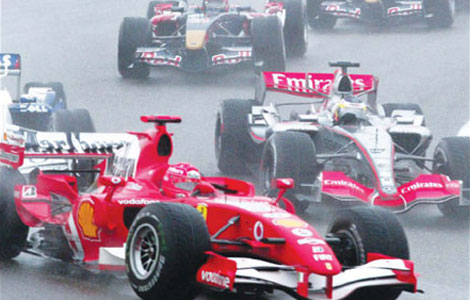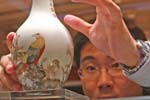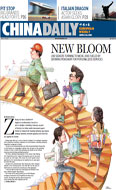Asia
Aftershock rattles disaster-weary Japan; 2 dead
Updated: 2011-04-08 10:10
(Agencies)
SENDAI, Japan - A strong aftershock ripped through northeastern Japan, killing two, injuring dozens and piling misery on a region still buried under the rubble of last month's devastating tsunami.
The quake late Thursday was the strongest tremor since the March 11 jumbo and did some damage, but it appeared to have spared the area's nuclear power plants. The Fukushima Dai-ichi complex where workers have been frantically trying to cool overheated reactors since they lost cooling systems last month reported no new abnormalities. Other facilities switched to diesel generators after the 7.1-magnitude quake knocked out power to much of the area.
Many people in the area have lived without water and electricity for nearly a month, and the latest tremor sunk more homes into blackness: In total, around 3.6 million households about 60 percent of residents in the area _ were dark Friday, said Souta Nozu, a spokesman for Tohoku-Electric Power Co., which serves northern Japan.
Matsuko Ito, who has been living in a shelter in Natori since the tsunami, said there's no getting used to the terror of being awoken by shaking.
"I was almost as scared as much as last time," said the 64-year-old while smoking a cigarette outside.
She said she started screaming when the quake struck around 11:30 p.m.
"Something has changed," she said. "The world feels strange now. Even the way the clouds move isn't right."
Thursday's quake initiated a tsunami warning of its own, but it was later canceled. Two people were killed, fire department spokesman Junichi Sawada reported Friday. A 79-year-old man died of shock and a woman in her 60s was killed when power was cut to her oxygen tank. More than 130 people were injured, according to the national police agency.
The temblor's epicenter was in about the same location as the March 11 tremor, about 40 miles (65 kilometers) from Sendai, an industrial city on the eastern coast, according to the U.S. Geological Survey. It was strong enough to shake buildings as far away as Tokyo, about 200 miles (330 kilometers) from the epicenter.
At a Toyota dealership in Sendai, most of a two-story show window was shattered, with thick shards heaped in front of the building. Items fell off store shelves and a large automated teller machine crept across the floor at a FamilyMart convenience store. Police directed cars through intersections throughout the city because traffic lights were out.
While the city is far enough inland that it largely escaped tsunami damage, people there lived without gas and electricity for weeks. Within an hour of Thursday's quake, they rushed convenience stores and cleared shelves of ice, water and instant noodles items that were in short supply after the bigger quake.
Japan's nuclear safety agency said nuclear facilities along the northeastern coast were under control after backup generators kicked in at two Rokkasho and Higashidori that lost power.
The operator of the tsunami-ravaged Dai-ichi plant said there was no sign the aftershock had caused new problems there. Workers retreated to a quake-resistant shelter in the complex, with no injuries.
The aftershock knocked out two of three power lines at the Onagawa nuclear power plant north of Sendai, which has been shut down since the tsunami. One remaining line was supplying power to the plant and radiation monitoring devices detected no abnormalities. The plant's spent fuel pools briefly lost cooling capacity, but it resumed because a power line was available for electricity.
"It's the way it's supposed to work if power is lost for any reason," said David Lochbaum, director of the nuclear safety project for the U.S.-based Union of Concerned Scientists. Since the tsunami warning was canceled 90 minutes after it was issued, there was no reason to believe the facilities' diesel generators would fail like the ones at the stricken Fukushima plant. The massive wave knocked out cooling systems and triggered a series of mishaps that have left workers struggling to stop radioactivity from spewing nearly a month later.
"That was really the blow that the plant didn't recover from," Lochbaum said.
E-paper

Green light
F1 sponsors expect lucrative returns from Shanghai pit stop
Buying into the romance
Born to fly
Light of hope
Specials

Share your China stories!
Foreign readers are invited to share your China stories.

No more Mr. Bad Guy
Italian actor plans to smash ‘foreign devil’ myth and become the first white kungfu star made in China.

Art auctions
China accounted for 33% of global fine art sales.
